Musculosqueletal disorders (MSD) are a big issue for the elderly.
It's not for nothing that words like ''MSD'', ''back pain'' or ''osteoarthritis'' are as popular on Google.
We all look, particularly the elderly, for solutions to overcome MSD. And if you read this article, I am convinced that it talks to you and you are also looking for this solution.
That is why, in this article, I would like to share with you the main musculosqueletal disorders in old age, ways to improve this system as well as how health professionals deal with these disorders.
Continue reading to find out more on the musculosqueletal health in seniors.
MSD...what are they ?
It's the set of affections to musculosqueletal structures (muscles, joints, tendons, ligaments, nerves and bones). They can affect arms and legs but also the back and the neck. They are the result of a combinaison of biomechanical, environmental and social issues.
There are among others muscular affections. They are a muscle contraction maintain over time. This contraction provokes a tension on the blood vessels. These cannot feed the muscle nor eliminate the waste produced by the muscle.
There are among others tendons affections. These disorders develop from excessive stretching of the tendon. Tendon disorders are characterized by inflammation.
And we can also talk about nerves affections. These are characterized by disruption of nerve function. The nerve, when it is chronically compressed, does not carry correctly the impulse to the muscles and the brain.
How do MSD appear ?
MSD can appear suddenly, but in the majority of cases, the apearance of first symptoms is slow. Symptoms and consequences deteriorate progressively.
How are MSD manifested ?
MSD can manifest by pain, joint heaviness, fatigue, swarmings, sensation loss, numbness, heat, cramps, stiffness, sensitivity to pressure or even a burning sensation.
MSD in old age
Osteoporosis
Osteoporosis is a bone affection characterized by a reduction of certain parts of the bones that become fragiles and prone to fractures. However, note that physical activity reduces the progression of osteoporosis.
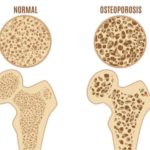
Spinal stenosis
Spinal stenosis is a narrowing of a certain part of the spine that causes irritation to the spinal cord or to the roots of one or more nerves.
Arthritis
Arthritsis is a disease that causes pain, joint stiffness and an inflammation of the joints.
Osteoarthritis
Osteoarthritis results from the wear and tear of the cartilage in the joints. This condition affects particularly the shoulder and spine. Osteoarthritis in the spine affects the ability of the disks between the vertebrae to absorb the shocks.
Back pain
Whether it's due to osteoarthritis or osteoporosis, older people are the most prone to back pain. Indeed, with age, strength and muscle mass gradually decrease. Low back pain, which results in pain in the lumbar vertebrae (lower back), is the most common form of back pain in seniors.
Tips for improving musculoskeletal health
Tip # 1
To reduce the risk of MSD, eat a diet balanced, rich in vitamins and minerals.
| Vitamins C and D | Promote healthy muscle growth |
| Vitamin K | Bone mineralization |
| Calcium | Ensure strong bones and avoid osteoporosis |
| Magnesium | Role in the formation of bone mineral |
| Zinc | Renewal of bone tissue |
Not to mention the consumption of fruits / vegetables and proteins to preserve bone mass as you age.
Tip # 2
Seniors benefit from an active lifestyle and practicing stretching exercises . These help to maintain joint flexibility and prevent the shrinkage of muscle fibers.
Yoga, Qigong, and Tai chi are examples of flexibility exercises. Qi Gong and Tai chi are disciplines based on Chinese philosophy. They combine movements, postures, breathing exercises and meditation.
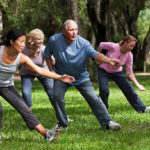
It is important to start with exercises adapted to our physical condition. You should never feel pain when stretching. Discomfort, yes, but not pain. Stretching should be practiced with a focus on the breath.
Tip # 3
Strength training is safe, even essential, for the elderly. It helps preserve muscle strength in addition to promoting the maintenance of bone mass.
As you age, working the postural muscles, especially those of the upper back, is recommended. This is because the upper body tends to curl forward. You have to open your rib cage and straighten your back.
No need to buy expensive equipment for strength training. Many exercises can be done at home, using your own weight, elastic tubes, dumbbells or a chair.
It is also possible to do strength training in your community: community centers, fitness centers, retirement homes or as part of recreational programs in the city.
Strength training can also be done while swimming. This allows to strengthen the muscles in a soft and harmonious way. Swimming makes the body work in near weightlessness and relieves the weight of the body from the joints. Thanks to a feeling of lightness, we naturally increase the intensity of muscular work.
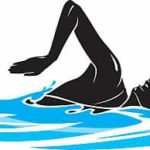
When it comes to exercises, it is desirable to start slowly and increase the pace.
Management of MSD by health professionals
The physiotherapist
There is strong evidence to support the effectiveness of physiotherapy for the treatment of MSD. The physiotherapist assesses and treats patients with MSD with the goal of reducing and eliminating pain, and solving problems with muscle weakness and loss of stability.
Following the initial assessment, the physiotherapist makes a physiotherapy diagnosis and proposes a treatment plan. Treatments may include education about the medical condition and symptom management, personalized exercises, manual therapy, soft tissue techniques and many other modalities.
The physiotherapist works in particular to improve the patient's posture. Because good posture helps reduce muscle loss, joint pain and balance problems. Good posture reduces the risk of a fall, in addition to speeding up recovery from a fall.
A word about postural and comprehensive rehabilitation (RPG)
Postural and comprehensive rehabilitation (RPG) is a field of physiotherapy expertise that takes into account the body as a whole. Its purpose is to relax the fasciae (the envelope of the muscles), to loosen the muscle chains and to reduce the compression on the joints, all of which allow the body to adopt a more adequate posture.
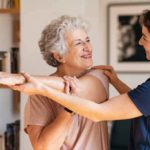
The occupational therapist
As for the occupational therapist, he helps manage pain and fatigue on a daily basis. He adapts or modifies certain tasks in order to help the patient to remain active and independent.
The kinesiologist
The kinesiologist helps the resumption of physical activities in a safe way and adapted to the patient's condition.
Adaptive clothing for the prevention of MSD
At Groupe Innova, we are concern with preventing MSD, just as much with the elderly as with health care staff. That is why we design adaptive clothing to compensate for the loss of flexibility and mobility of our clients. The big opening in the back avoids the person to lift his arms and making bad movements when putting on the clothing.
Adaptive clothing also helps the health care staff by reducing the risk of work accident. Since the adaptive clothing is easily slipped on from the bed or the person's wheelchair, the staff avoids exerting excessive effort in lifting, pushing or moving the patient. The health care staff is therefore less likely to have a physical injury (particularly to the back, arms / hands, legs / feet and shoulders). Reducing the movements of patients also prevents discomfort and aggression among them.
MSD...in conclusion
Here is.
Here we are.
I spoke to you about the different types of MSD in old age. That the MSD are affections to musculosqueletal structures that generally appear progressively. That a balance diet and stretching exercices and muscle training improve the musculosqueletal health. That MSD are mainly supported by the physiotherapist, and to a lesser extent, by the occupational therapist and the kinesiologist. And that adaptive clothing, like at Groupe Innova, reduces MSD in the elderly and health care staff.
When we get old, I know that having MSD, such as back pain for example, is difficult. I know that pain management requires efforts. It requires to do exercices for the back regularly. To consult a physiotherapist. To try products such as a lumber belt. To have a good sleeping position and a comfortable and adaptive mattress.
In short, a lot of efforts, but I would like to give you this advice. Don't focused only on your pain. Do not think about it a lot. Tell yourself that this health difficulty is part of aging.
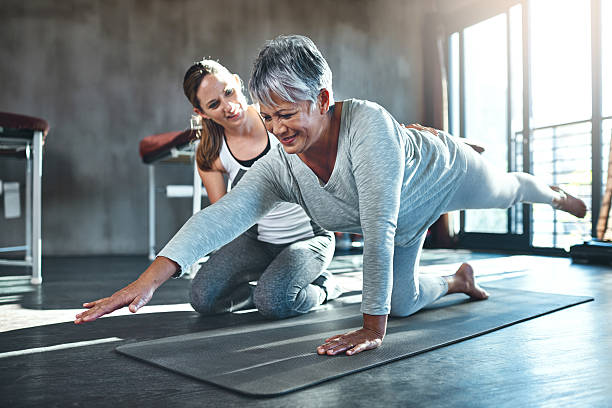
J’ai beaucoup aimé article
Il y a aussi l’acupuncture qui peut aider les TMS et aussi l’ostéopathie. Certaines personnes m’ont dit que ces spécialistes les avaient grandement aidées.
Et quand on a tout essayé et que l’on a encore des douleurs (comme moi), il y a les anti-inflammatoires dont on ne doit pas abuser.
Can I simply say what a comfort to find someone that actually understands what theyre discussing on the net. You actually realize how to bring a problem to light and make it important. More and more people really need to read this and understand this side of your story. I was surprised that youre not more popular since you definitely possess the gift.